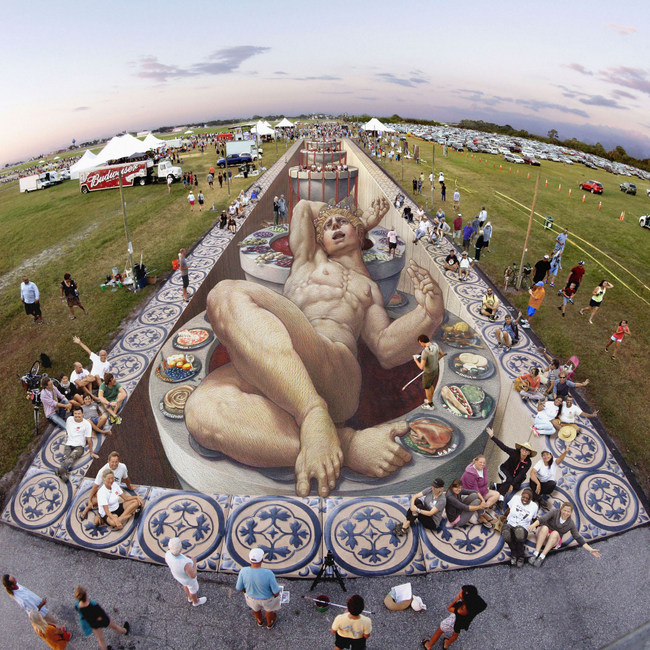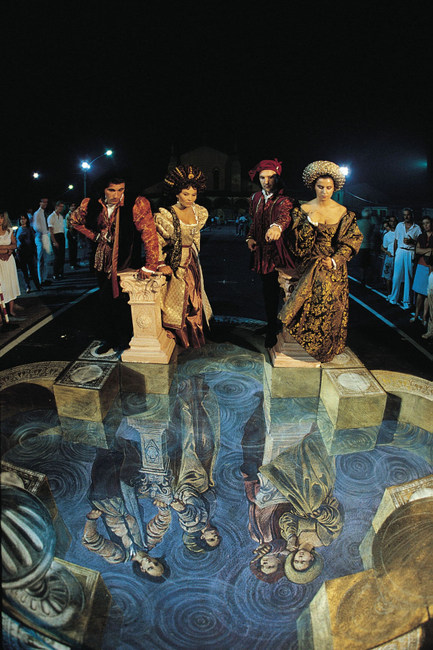Kurt Wenner, Master of 3D Street Art

Beginnings
Kurt Wenner attended Rhode Island School of Design and Art Center College of Design before working for NASA as an advanced scientific space illustrator. In 1982, Wenner left NASA for Italy to pursue his love of classical art.

My interest in Renaissance classicism started with the simple desire to draw well. I was struck by the vast difference between how students and teachers drew in the 20th Century and the way artists drew 500 years ago. It seemed to me that artists of the past had abilities far beyond those of today. My curiosity about this discrepancy took me to Rome in order to seek out and master drawing and painting within the “language?”of western classicism. During this time I isolated myself from 20th century art in order to explore the ideals and concepts practiced in earlier centuries. It has since become an ongoing mission to rediscover classical traditions and communicate them to a contemporary audience.
Inventing 3D Street Art
In 1984, Wenner invented an art form all his own that has come to be known as anamorphic, 3D pavement art, or 3D street art. A form of perspective, known as anamorphism was used by the great European Masters to give the illusion of soaring architecture and floating figures in ceiling frescoes. Inspired by this use of perspective, Wenner invented a new geometry to create compositions that appear to rise from, or fall into the ground.

In traditional anamorphic perspective, painted forms appear correct when viewed from one point in space. Wenner’s geometry corrects the specific distortion caused by viewing his large images at an oblique angle. This type of geometry has come to be known as Wenner’s hyperbolic perspective.
Every work of figurative art, even a picture in a frame, employs some illusion. The two major types of illusion are conventional and optical. A framed picture is a conventional illusion. The viewer can choose to see the frame as a window, a starting point from which to visually enter the painted world. This is referred to as “a willing suspension of disbelief.” The frame can also be a border, safely separating the real world from the imaginary. The viewer recognizes the work as a painting on a wall long before looking at the subject. Optical illusions blur the distinction between the real and the imaginary, literally fooling the viewer (trompe l’oeil).
I juxtapose both types of illusion in my work. In photographs of my 3D images the art can appear as “real” as the audience. I use the photograph’s “objective documentation” to question if the contemporary world is really more substantial than the worlds of history and imagination.
Although I employ an arsenal of visual tools to create illusion, the classical language of form is the most vital. Classicism is vastly superior to other forms of realism for the creation of illusion as it is based on human perception. Every stroke has the purpose of communicating form and space to the viewer. My perspective technique enables me to bring classicism into the present by creating an optical and geometrical link between a work of art and its contemporary surroundings.
Kurt Wenner
Mar 14, 2020
